
Find Help
More Items From Ergsy search
-

How is ketamine administered?
Relevance: 100%
-
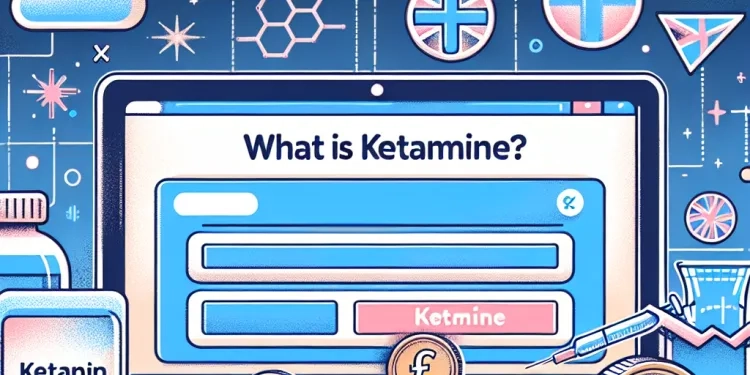
What is Ketamine?
Relevance: 71%
-

Is ketamine safe for everyone?
Relevance: 69%
-

What is ketamine infusion therapy?
Relevance: 67%
-

Is ketamine addictive?
Relevance: 65%
-

What is the difference between ketamine and esketamine?
Relevance: 64%
-

What conditions is ketamine used to treat?
Relevance: 63%
-

Is ketamine a controlled substance?
Relevance: 62%
-

What precautions are necessary when using ketamine?
Relevance: 62%
-

Is ketamine legal?
Relevance: 62%
-

How is ketamine different from traditional antidepressants?
Relevance: 61%
-

How does ketamine work?
Relevance: 60%
-

How long do the effects of ketamine last?
Relevance: 58%
-

What are the common side effects of ketamine?
Relevance: 57%
-

Does ketamine have long-term effects?
Relevance: 53%
-
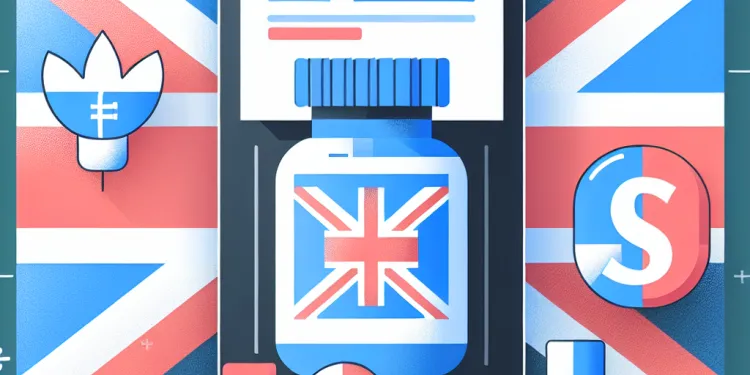
How is Ozempic administered?
Relevance: 45%
-

Who can administer Botox?
Relevance: 44%
-

How is Ozempic administered?
Relevance: 44%
-

How is Mounjaro administered?
Relevance: 42%
-
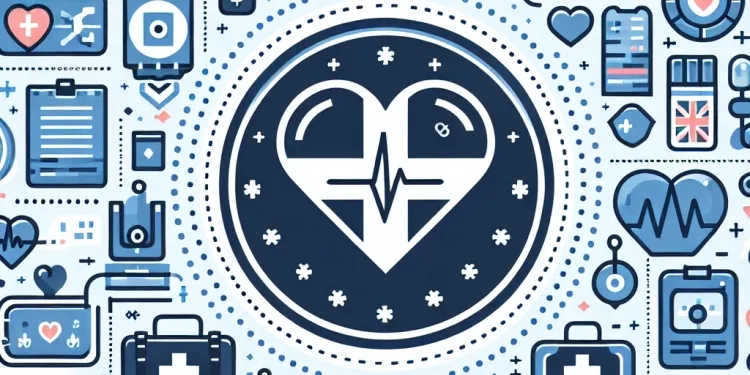
How is Wegovy administered?
Relevance: 40%
-

How is Paillon treatment administered?
Relevance: 40%
-

How quickly can ketamine alleviate depression symptoms?
Relevance: 38%
-

What should I expect during a ketamine infusion?
Relevance: 35%
-

How is Baxdrostat administered?
Relevance: 35%
-

How is Botox administered?
Relevance: 29%
-

What drugs are commonly used to spike drinks?
Relevance: 23%
-

Can I drive after having ketamine?
Relevance: 22%
-

What effects do spiking drugs have on the body?
Relevance: 20%
-

Can ketamine be used to treat major depressive disorder?
Relevance: 19%
-

What substances are commonly associated with drug offences?
Relevance: 16%
-
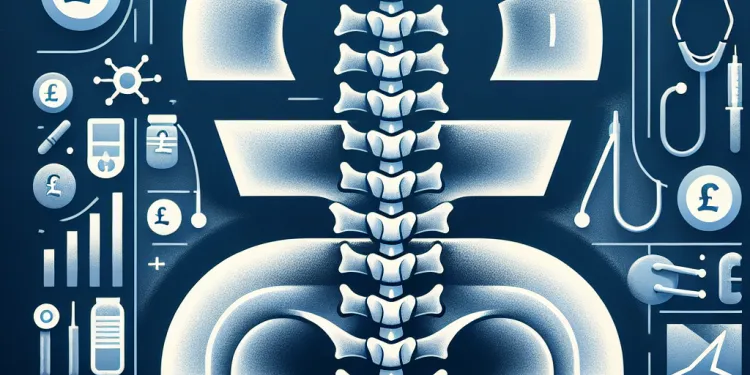
How will I be positioned for spinal anaesthesia?
Relevance: 13%
-

Epidural for labour at North Bristol NHS Trust
Relevance: 13%
-

Having an epidural in labour at St Michael's Hospital
Relevance: 13%
-

Is Botox safe?
Relevance: 13%
-

Top 5 questions about having a general anaesthetic
Relevance: 12%
-

Can Mounjaro be taken orally?
Relevance: 12%
-

Is epinephrine the only treatment for severe nut allergy reactions?
Relevance: 12%
-

What is the year 8 HPV vaccine? | NHS
Relevance: 12%
-
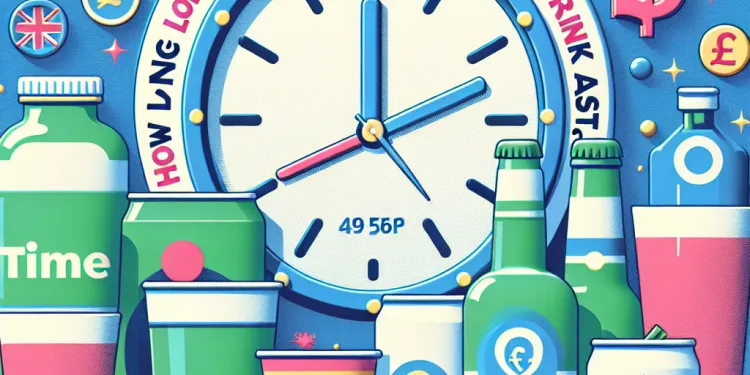
How long do the effects of a spiked drink last?
Relevance: 12%
-

NHS Acute Care Anaphylaxis
Relevance: 12%
Introduction to Ketamine Administration
Ketamine, originally developed as an anaesthetic for medical and veterinary use, has gained recognition in recent years for its therapeutic potential in treating depression, anxiety, and chronic pain. Its unique properties have made it a valuable tool in both medical and psychological settings. Understanding how ketamine is administered can provide insight into its multifaceted applications and safety protocols.
Intravenous Infusion
One of the most common methods of administering ketamine is through intravenous (IV) infusion. This method is favoured for its rapid onset of action, allowing healthcare professionals to closely monitor and adjust dosages based on the patient’s response. In clinical settings, such as hospitals and specialised ketamine clinics, IV infusions are typically conducted under the supervision of a medical professional. The procedure involves inserting a cannula into a vein, usually in the arm, to deliver a controlled dose of ketamine over a set period. The duration of the infusion can vary, but it often lasts about 40 to 60 minutes. Patients are usually monitored for any side effects during the procedure, such as changes in blood pressure or heart rate.
Intramuscular Injection
Intramuscular (IM) injection is another method used to administer ketamine. It involves injecting the drug directly into a muscle, where it is absorbed into the bloodstream. This method can be preferable in situations where IV access is difficult to obtain. IM injections have a slightly slower onset compared to IV infusions but can be more convenient in some settings. The effects generally appear within a few minutes and last for a shorter duration.
Nasal Spray
Ketamines can also be administered via a nasal spray, a method considered less invasive than injections. An example is Esketamine, a variant of ketamine available as a nasal spray under the supervision of a healthcare professional. This route facilitates rapid absorption through the nasal mucosa into the bloodstream. Nasal sprays are designed for patients who may benefit from ketamine therapy but prefer not to undergo injections. The use of nasal spray requires medical oversight, particularly in initial dosing, to ensure proper usage and monitor therapeutic effects.
Oral Administration
Less commonly, ketamine can be prescribed in oral form. Oral administration is usually reserved for treatment outside of a clinical setting, often for ongoing management of chronic conditions. The absorption of ketamine is slower when taken orally, and the effects are less immediate compared to other methods. Dosages and regimens are carefully adjusted by healthcare providers to address the specific needs of the patient.
Conclusion
Ketamine administration in the UK varies based on medical indications, patient preference, and clinical objectives. Whether through intravenous, intramuscular, nasal, or oral routes, it is essential that ketamine is administered under professional guidance to ensure safety and efficacy. As research continues to explore the potential applications of ketamine, its administration methods may evolve, offering new therapeutic pathways for patients in need.
What is Ketamine?
Ketamine is a medicine that was first used to help with surgeries for people and animals. Now, doctors use it to help with depression and some kinds of pain. Ketamine can help with feeling very sad or worried. Understanding how doctors give ketamine can help us know how it works and how to use it safely.
Giving Ketamine with an IV
A common way to give ketamine is through an IV. An IV is a tube put in a vein, usually in your arm, to give medicine. This is a fast way to get ketamine because it goes directly into the blood. Doctors watch you closely to make sure you are okay. It usually takes about 40 to 60 minutes. Doctors check your blood pressure and heart rate to make sure you are safe.
Giving Ketamine with a Shot
Doctors can also give ketamine with a shot in the muscle. This is called an intramuscular, or IM, injection. It’s used if an IV is hard to do. Shots may take longer to work than an IV, but they are easier in some places. The effects start in a few minutes but don’t last as long.
Using a Nasal Spray
Ketamine can also be given as a nasal spray. This means spraying the medicine into your nose. It is less scary than shots. A special type called Esketamine is used this way. Doctors help make sure you use it right and that it works well for you. The spray helps ketamine get into the body fast.
Taking Ketamine by Mouth
Sometimes, ketamine comes as a pill or liquid to drink. This is not as common. Taking ketamine this way is slower, and it starts working later than other methods. Doctors decide the right amount for you if you take it at home. It helps with ongoing problems.
Final Thoughts
In the UK, ketamine is given in different ways based on what the patient needs. It can be an IV, a shot, a spray, or a pill. It is important that a doctor helps you learn how to take ketamine safely. Scientists are learning more about ketamine, and new ways to use it might be developed in the future.
Frequently Asked Questions
What forms does ketamine come in for administration?
Ketamine can be administered as an intravenous infusion, intramuscular injection, intranasal spray, or oral tablets or lozenges.
How is ketamine administered intravenously?
Intravenously, ketamine is given through an IV line usually over a set period of time, controlled through a pump or manually.
What precautions are necessary during intravenous ketamine administration?
Monitoring by a healthcare professional is necessary to check for adverse reactions and vital signs due to potential rapid effects.
How is ketamine administered as an intramuscular injection?
Ketamine is injected directly into a muscle, usually in a medical setting, for rapid effects.
How is ketamine given as an intranasal spray?
Ketamine is administered as a nasal spray by spraying it into the nostrils, often used for outpatient treatments.
Can ketamine be taken orally?
Yes, ketamine can be prepared in oral forms like tablets or lozenges, although the bioavailability is lower compared to other methods.
What is the primary method of ketamine administration for depression treatment?
Intravenous administration is one of the primary methods currently used in clinical settings for the treatment of depression.
Is sedation required during ketamine administration?
Sedation is not typically required, but monitoring is necessary due to the dissociative effects of ketamine.
How long does an intravenous ketamine infusion session typically last?
An IV ketamine session usually lasts around 40 minutes to 1 hour.
What is the role of a healthcare professional in ketamine administration?
Healthcare professionals monitor the patient’s vital signs, adjust dosages, and manage any adverse effects during administration.
Can ketamine be administered at home?
Some forms, like nasal spray or oral tablets, can potentially be used at home under medical guidance, but initial administrations are usually supervised.
Is ketamine administration painful?
Intravenous and intramuscular injections can cause mild discomfort or pain at the injection site.
What should a patient expect during ketamine administration?
Patients may experience feelings of dissociation, relaxation, mild hallucinations, or altered perceptions.
What are possible side effects during ketamine administration?
Possible side effects include increased heart rate, blood pressure changes, dizziness, and hallucinations.
How is dosing determined for ketamine administration?
Dosing is individualized based on factors like the treatment purpose, patient’s weight, and response to the drug.
Can ketamine be used for chronic pain management?
Yes, ketamine is sometimes used off-label for managing chronic pain through infusions or other administration methods.
How frequently can ketamine be administered for depression?
The frequency can vary, but commonly it starts with a series of treatments over several weeks, then may decrease to maintenance doses.
Do patients need to fast before ketamine administration?
Patients may be advised to avoid food several hours before the procedure to prevent nausea.
Is there an age limit for ketamine administration?
Ketamine administration is typically more common in adults, but it can be used in children under specific medical guidance.
Can ketamine be combined with other therapies?
Yes, ketamine is often used alongside other treatments, such as therapy or medications for mental health or pain management.
How can people take ketamine?
Ketamine can be taken in different ways. Here are some of them:
- Liquid: It can be given with a needle.
- Pill: It can be taken by mouth.
- Nasal spray: It can be sprayed into the nose.
If you need help understanding more, you can:
- Ask someone you trust to explain.
- Use drawings or pictures to see what the different forms look like.
- Look for videos that show how it is given.
You can take ketamine in different ways. It can be given through a needle into your vein, a shot into your muscle, a spray into your nose, or by swallowing tablets or lozenges.
How do you get ketamine through a vein?
Ketamine goes into your body through a small tube called an IV line. This takes a certain amount of time. A pump or a person can help make sure it goes in just right.
What safety steps are needed when giving ketamine through an IV?
Using ketamine with an IV can be tricky. Here are some steps to stay safe:
- Make sure a doctor or nurse is giving the ketamine.
- Watch for any signs that you feel unwell.
- Stay in a safe and quiet place.
- Have someone with you for support.
These steps help to make ketamine use safer. It’s important to follow them carefully.
A doctor or nurse needs to keep an eye on you. They check if you have any bad reactions and look at important health signs because things could happen quickly.
How do doctors give ketamine as a shot in the muscle?
Doctors use a needle to give ketamine as a shot. This is called an injection. They put the needle into a muscle, usually in your arm or leg.
If you are unsure, ask the doctor to explain what they are doing. It is okay to ask questions.
If you are worried about the shot, you can try some things to feel better:
- Take deep breaths to stay calm.
- Think of something happy or nice.
- Bring a friend or family member with you.
Doctors give ketamine with a needle into a muscle. This happens quickly at the hospital or clinic.
How do you use ketamine as a nose spray?
Here is how to use ketamine nose spray:
- Doctor: A doctor will show you how to use it.
- Spray: The spray goes into your nose.
- Steps: Follow the steps your doctor gives you.
- Help: Ask your doctor or nurse if you need help.
If reading is hard, you can:
- Ask someone to read it to you.
- Use pictures or videos to learn.
Doctors give ketamine as a nose spray. They spray it into your nose. It is often used when you do not have to stay in the hospital.
Can you take ketamine by mouth?
Yes, ketamine can be made into pills or lozenges (candy that dissolves in your mouth). But, when you take it this way, your body uses less of it.
How do doctors give ketamine to help with depression?
One common way to help people with depression is by giving medicine through a tube called an "IV." This is done in hospitals or clinics.
Do you need to be sleepy when taking ketamine?
When doctors give you ketamine, they might help you feel sleepy. This can make you feel calm and not worried. Ask someone you trust, like a doctor or nurse, if you have any questions. They can help you understand.
Helpful tools:
- Use pictures or diagrams to show what happens with ketamine.
- Ask someone to explain it with simple words.
- Watch a video for kids about going to the hospital.
Usually, you do not need to sleep during this, but doctors will check you because ketamine can make you feel different from your body.
How long does a ketamine drip session usually take?
A ketamine drip usually takes about 40 minutes to an hour. Some people might take longer or shorter.
If you find reading hard, ask someone to read it with you or use a text-to-speech app to listen instead.
A ketamine session with an IV takes about 40 minutes to 1 hour.
What does a healthcare worker do when giving ketamine?
Doctors and nurses check the patient's important signs, like heart rate and breathing. They make sure the right amount of medicine is given. They also watch out for any bad reactions to the medicine.
Can you take ketamine at home?
Some medicines, like nose sprays or pills, might be used at home if a doctor says it's okay. But the first time you use them, a doctor should be there to help.
Does ketamine hurt when you take it?
Getting a shot in your arm or through a vein can hurt a little bit where the needle goes in.
What happens when a patient gets ketamine?
Sometimes, people might feel like they are not really there, feel very relaxed, or see and hear things that are not real.
What can happen when you take ketamine?
You might feel your heart beating faster. Your blood pressure could go up or down. You might feel dizzy or see things that aren’t there.
How do doctors choose the right amount of ketamine to give?
The amount of medicine a person needs depends on a few things. It depends on why they need the medicine, how much they weigh, and how the medicine affects them.
Can we use ketamine to help with long-lasting pain?
Yes, doctors sometimes use ketamine in a special way to help with long-lasting pain. They give it through a needle or other methods.
How often can you take ketamine for feeling sad?
Ketamine is a medicine that some people take when they feel very sad. It can help them feel better.
You should talk to a doctor to know how often you can take ketamine. A doctor will know what is safe for you.
Some people might take ketamine once or twice a week, but it is different for everyone.
It is important to make sure you follow the doctor's advice.
Ask someone to help you if you do not understand. You can also use tools like audiobooks or apps that read text out loud to understand better.
How often you need treatment can change. Usually, you start with treatments a few times a week. After that, you might need them less often.
Should patients stop eating before taking ketamine?
Doctors may tell patients not to eat for a few hours before the test. This helps stop feeling sick.
Can people of all ages use ketamine?
Ketamine is medicine. Some people use it for feeling less pain or to feel different.
Doctors usually give it to people. Not everyone can use it.
There are rules about age for using ketamine. You might need to be at a certain age.
If you want to know more, talking to a doctor or a trusted adult can help. They can give you more information.
Doctors usually give ketamine to adults. But sometimes, if a doctor says it’s okay, they can give it to children too.
Can you use ketamine with other treatments?
Yes, ketamine is used with other treatments like talking therapy or medicine to help with mental health or pain.
Useful Links
- Ergsy carfully checks the information in the videos we provide here.
- Videos shown by Youtube after a video has completed, have NOT been reviewed by ERGSY.
- To view, click the arrow in centre of video.
- Most of the videos you find here will have subtitles and/or closed captions available.
- You may need to turn these on, and choose your preferred language.
- Go to the video you'd like to watch.
- If closed captions (CC) are available, settings will be visible on the bottom right of the video player.
- To turn on Captions, click settings .
- To turn off Captions, click settings again.
More Items From Ergsy search
-

How is ketamine administered?
Relevance: 100%
-

What is Ketamine?
Relevance: 71%
-

Is ketamine safe for everyone?
Relevance: 69%
-

What is ketamine infusion therapy?
Relevance: 67%
-

Is ketamine addictive?
Relevance: 65%
-

What is the difference between ketamine and esketamine?
Relevance: 64%
-

What conditions is ketamine used to treat?
Relevance: 63%
-

Is ketamine a controlled substance?
Relevance: 62%
-

What precautions are necessary when using ketamine?
Relevance: 62%
-

Is ketamine legal?
Relevance: 62%
-

How is ketamine different from traditional antidepressants?
Relevance: 61%
-

How does ketamine work?
Relevance: 60%
-

How long do the effects of ketamine last?
Relevance: 58%
-

What are the common side effects of ketamine?
Relevance: 57%
-

Does ketamine have long-term effects?
Relevance: 53%
-

How is Ozempic administered?
Relevance: 45%
-

Who can administer Botox?
Relevance: 44%
-

How is Ozempic administered?
Relevance: 44%
-

How is Mounjaro administered?
Relevance: 42%
-

How is Wegovy administered?
Relevance: 40%
-

How is Paillon treatment administered?
Relevance: 40%
-

How quickly can ketamine alleviate depression symptoms?
Relevance: 38%
-

What should I expect during a ketamine infusion?
Relevance: 35%
-

How is Baxdrostat administered?
Relevance: 35%
-

How is Botox administered?
Relevance: 29%
-

What drugs are commonly used to spike drinks?
Relevance: 23%
-

Can I drive after having ketamine?
Relevance: 22%
-

What effects do spiking drugs have on the body?
Relevance: 20%
-

Can ketamine be used to treat major depressive disorder?
Relevance: 19%
-

What substances are commonly associated with drug offences?
Relevance: 16%
-

How will I be positioned for spinal anaesthesia?
Relevance: 13%
-

Epidural for labour at North Bristol NHS Trust
Relevance: 13%
-

Having an epidural in labour at St Michael's Hospital
Relevance: 13%
-

Is Botox safe?
Relevance: 13%
-

Top 5 questions about having a general anaesthetic
Relevance: 12%
-

Can Mounjaro be taken orally?
Relevance: 12%
-

Is epinephrine the only treatment for severe nut allergy reactions?
Relevance: 12%
-

What is the year 8 HPV vaccine? | NHS
Relevance: 12%
-

How long do the effects of a spiked drink last?
Relevance: 12%
-

NHS Acute Care Anaphylaxis
Relevance: 12%


